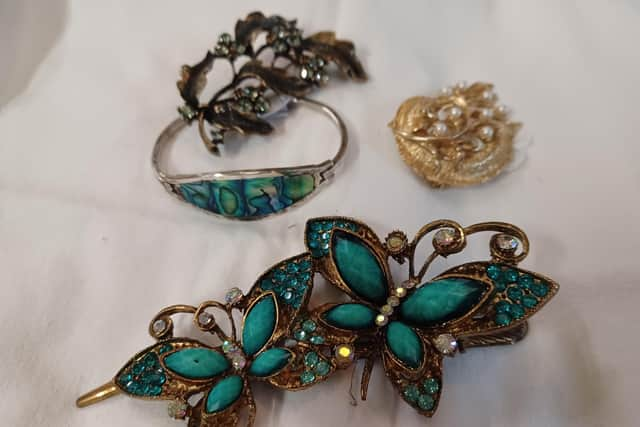Valentine's gifts don't come better than jewellery...
and live on Freeview channel 276
He’s right: necklaces and rings can steal the spotlight, but beautiful brooches have a long and fascinating history. They even convey messages: think Queen Elizabeth I’s precious stones symbolising ultimate power, or Supreme Court judge Lady Hale’s statement spider brooch a couple of years ago.
Brooches developed in the Bronze Age as practical cloak clasps, like the iconic Celtic long pin and ring design. In Viking society, increasingly detailed brooches were worn as decoration by men and women. Over the centuries, as craftsmen became more skilled, higher quality metals and gems were introduced.
Advertisement
Hide AdAdvertisement
Hide AdPearl brooches known as “girandoles”, displaying a flower arrangement with hanging jewels, were a popular Georgian design. Good examples can fetch tens of thousands of pounds today, but beware of imitation pearls, often used in lieu of the real thing!


Also remember the secure locking “C” clasp was invented around 1900, earlier brooches should have the open “C”.
Feather-shaped “Aigrette brooches”, originally from the 17th century, have seen a resurgence in popularity every century since. Finely detailed, set with flat-cut garnets or diamonds and often featuring tiny crafted birds flying around the plumes, they make stunning, timeless gifts.
Queen Victoria loved cameo brooches, often bestowing likenesses of Prince Albert or herself as gifts. The most sought-after cameos, however, feature not the familiar single face, but mythological scenes or gods and goddesses.
Advertisement
Hide AdAdvertisement
Hide AdWhile we might consider mourning brooches, also indelibly linked to Queen Victoria and containing hair of a loved one, a bit morbid, Victorian examples rarely fetch under £100.
Throughout the 20th century, brooch designs continued to follow fashion, from opulent to quirky, including stunning Art Deco designs. Examples currently in the centre include vibrant butterfly and delicate leaf designs, starting from just £5.